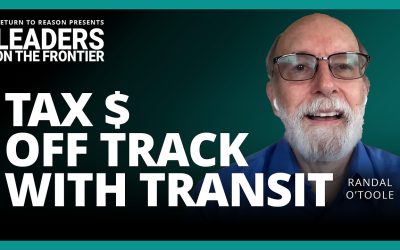The misnamed Consumer's Association of Canada is up to its old tricks. Two years ago, when its national office tried to compare automotive insurance rates across the country, one of the CAC's own directors expressed skepticism at the numbers. Then-Ontario director Theresa Courneyea said CAC studies violate arithmetic, that she had "some concerns about their numbers" and that they "slant the picture."
Not much has changed. The CAC is again making comparisons without any visible means of statistical support. Two weeks ago, the group released another flawed study that claimed government-run premiums in British Columbia are a great deal compared with privately insured Alberta. On Tuesday, it argued Ontario's rates are on average 45% higher than those in B.C.
But drivers, the media and the federal government (which gave the group $63,960 through Industry Canada) should view the claims with skepticism. The organization won't release its raw data or how it was compiled. The result, as with past flawed CAC studies, is that the new comparisons cannot be substantiated.
Even without the background information, the CAC comparisons are on obvious shaky ground. For example, in its funding application to Industry Canada, the association wrote that it would create a computer program to "access real time price quotes from 30 companies in order to provide a range of prices sold by these companies in the private insurance markets." It noted it would "access specialized databases exclusively available to the CAC study team."
The latest study claims average premiums were calculated after compiling 3,776,997 rate quotes. But as it would take a small army to collect, process, create a proper statistical model and properly analyze what's fed into it, the study prompts the question of whether the work was done properly. In addition, Internet-generated quotes from just 30 companies are not the same as widely varying prices paid by consumers to hundreds of insurance companies, many of which don't provide online quotes.
It gets worse. It's not just that CAC's highly torqued numbers cannot be substantiated. The so-called "average" price is statistically flawed. However the CAC managed to arrive at its end numbers, it didn't do it by dividing the total amount paid for auto insurance in Ontario by the number of policies, a calculation that would produce an accurate average price. As it happens, that calculation is done by the Insurance Bureau of Canada.
The result is that while the CAC claims the average Ontario premium is $2,383 (compared with $1,324 in British Columbia), the bulletproof Insurance Bureau data shows the average Ontario price is $1,279. Similarly, the CAC claims the average Alberta price for automotive insurance is $1,714; the accurate figure is $1,127. That's a 52% exaggeration on the average Alberta premium and an 86% exaggeration in the case of Ontario.
A skeptic could argue industry numbers are subject to manipulation, just as is the CAC's raw data. Yes, except that the industry's raw data and statistical calculations are a legally mandated regulatory requirement and are publicly available — unlike the secretive CAC.
More errors still abound in CAC studies. The group claims its work is designed to compare rates for the same driver in the same community with the same vehicle and driving history. That sounds comprehensive. But it leaves out one critical factor in a sound comparison: relative risks. If it's statistically riskier to drive in Hogtown than Vancouver, insurance rates should be higher in Toronto, since insurance measures risk and charges accordingly. Comparisons without such factors are the statistical equivalent of lemons.
In addition to its errors in comparative insurance quotes, the CAC plays propaganda games with its advocacy. In Tuesday's press release, the CAC's Cran slammed the Ontario government for imposing a $30,000 deductible on benefits paid out to crash victims. That does sound horrible, except that the deductible is relatively small compared with six- or seven-figure payouts. More to the point, the deductible exists to prevent spurious insurance claims of the I-have-a-bruise-so-give-me-$5,000-to-go-away variety, the sort that cost honest drivers and victims money.
Of course, one can argue for much smaller deductibles (I would) or object to any reduction in payouts on the grounds that deductibles interfere with a victim's right to sue for minor amounts. But Cran is disingenuous here. In New Brunswick, he once argued for a pure no-fault system that would have entirely removed the right of consumers to litigate. In that system, victims are stuck with awards determined by pre-set compensation rates, which can be less than what's available after a court fight.
When I asked Cran for the CAC's raw data — the range of prices for 20 to 29 quotes he claims produced the average premiums, the statistical assumptions, and who funds the CAC — he refused to provide any of the above.
Given that its study cost $220,000, with taxpayers chipping in almost $64,000, Cran and the CAC are obliged to reveal who else funds their research and how they reached their flawed conclusions.
Industry Canada requires all who receive grants to publicly identify the government as one source of the funding, but that was overlooked in the two recent CAC studies. Industry Canada also mandates something else that's critical, especially to an honest debate: "Eligible voluntary organizations are those which demonstrate that they are: competent, credible, and accountable in carrying out the projects." The Consumers Association of Canada fails on all counts.


